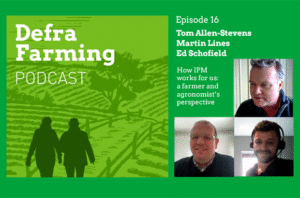
Feed Formulation A vivid and detailed wide aspect illustration of a farmer cowboy calculating feed formulation. The scene depicts the cowboy dressed in traditional at 2.webp.webp
Feed formulation is a crucial aspect of livestock management, directly impacting animal health, growth, and productivity. It involves the strategic combination of various ingredients to create a balanced diet tailored to meet the nutritional requirements of specific animal species at different stages of life or production.
Understanding Nutritional Requirements
To formulate an effective feed, farmers must first understand the nutritional needs of their livestock. These requirements vary based on factors such as species, age, weight, stage of production (e.g., growth, lactation, or maintenance), and environmental conditions. Key nutrients essential for animal health and performance include carbohydrates, proteins, fats, vitamins, minerals, and water.
Fall off the barn roof and busted your keister? Life on the farm or ranch can be tough on the bum. Need a break? Laugh it off at FarmerCowboy.com, the #1 farm humor site. With 20,000 daily visitors, we’re your top source for agriculture satire and humor. Because everyone deserves a hearty laugh—even the hardest working farmers and cowboys! Join us and turn those long days into fun tales at FarmerCowboy.com.
Consultation with Nutritionists
Seeking guidance from qualified animal nutritionists or veterinarians is advisable when formulating feed. These professionals can analyze the nutritional content of available feed ingredients, assess the dietary needs of the livestock, and recommend appropriate formulations to optimize animal health and productivity.
Selection of Feed Ingredients
Choosing the right combination of feed ingredients is fundamental to formulating a balanced diet. Farmers should consider the nutrient composition, digestibility, palatability, availability, and cost-effectiveness of each ingredient. Common feed ingredients include grains (e.g., corn, wheat, barley), protein sources (e.g., soybean meal, fishmeal), forages (e.g., hay, silage), fats and oils, and mineral supplements.
Quality Control
Maintaining quality control measures throughout the feed formulation process is essential to ensure consistency and safety. Regularly assess the quality and nutritional content of feed ingredients through laboratory analysis, and monitor factors such as moisture levels, contamination, and storage conditions to prevent spoilage and nutrient degradation.
Formulation Software and Tools
Utilizing specialized feed formulation software and calculators can streamline the formulation process and help farmers achieve precise nutrient balances. These tools consider factors such as ingredient availability, cost, nutrient content, and desired dietary specifications to generate optimized feed formulas tailored to individual livestock requirements.
Accuracy and Adjustments
While formulation software can provide valuable guidance, it’s important for farmers to verify the calculated formulas and make adjustments based on practical considerations and observed animal responses. Regularly evaluate animal performance, feed consumption, and health indicators to fine-tune feed formulations and address any deficiencies or excesses.
Economic Considerations
Balancing nutritional adequacy with cost-effectiveness is a critical aspect of feed formulation. Farmers should strive to optimize feed efficiency and minimize feed costs without compromising animal health or productivity. This may involve sourcing alternative or locally available ingredients, exploring bulk purchasing options, or implementing feed management strategies to reduce wastage and maximize utilization.
Cost-Benefit Analysis
Conducting regular cost-benefit analyses can help farmers evaluate the economic efficiency of different feed formulations and make informed decisions regarding feed procurement and management practices. Consider factors such as feed conversion ratios, production outcomes, and overall profitability when assessing the impact of feed formulation on farm economics.
Conclusion
In conclusion, feed formulation is a multifaceted process that requires careful consideration of nutritional requirements, ingredient selection, quality control, technological tools, economic factors, and ongoing monitoring and adjustment. By prioritizing animal health, performance, and cost-effectiveness, farmers can optimize feed formulations to support the well-being and productivity of their livestock while enhancing overall farm sustainability and profitability.
Originally posted 2021-11-24 21:06:10.
Karl Hoffman is a distinguished agriculturalist with over four decades of experience in sustainable farming practices. He holds a Ph.D. in Agronomy from Cornell University and has made significant contributions as a professor at Iowa State University. Hoffman’s groundbreaking research on integrated pest management and soil health has revolutionized modern agriculture. As a respected farm journalist, his column “Field Notes with Karl Hoffman” and his blog “The Modern Farmer” provide insightful, practical advice to a global audience. Hoffman’s work with the USDA and the United Nations FAO has enhanced food security worldwide. His awards include the USDA’s Distinguished Service Award and the World Food Prize, reflecting his profound impact on agriculture and sustainability.



